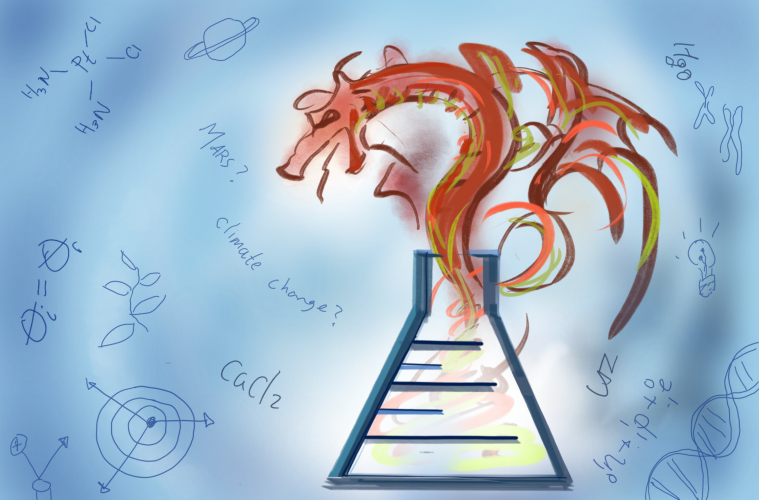The Science Hub: fetal tissue debates, Geminid meteor shower, climate change and Virgin Galactic spacecraft
December 19, 2018
Trump is cracking down on human fetal tissue use
In part of an effort to curtail the usage of human fetal tissue in medical research, the Department of Health and Human Services issued a letter last week to the University of California, San Francisco that warned the approaching cut of a typically annually-renewed grant for fetal tissue.
The usage of fetal tissue in research has been a hot topic of debate, especially as the Trump Administration that has received pressure from anti-abortion groups.
Fetal tissue is used to research HIV, cancer, Zika and other diseases ─and scientists claim that there’s no substitute for it. For this reason, National Institute of Health (NIH) Director Francis Collins defended human fetal tissue research as scientifically and ethically justified on Dec. 18, 2018.
Opponents of using human fetal tissue have criticized Collins’ statement and the practice as a whole, decrying it as the inhumane byproduct of abortion.
-Rachel Chang
Is it a bird? Is it a plane? No! It’s the Geminid Meteor Shower
The current iteration of the Geminid Meteor Shower peaked between Dec. 13 and Dec. 14. The Geminid Meteor Shower is one of the most visible meteor showers. This particular meteor shower occurs approximately annually when the Earth travels through the debris of the asteroid 3200 Phaethon. The Geminid Meteor Shower grows stronger each year as Jupiter’s gravity slowly drags the particles from 3200 Phaethon closer and closer to Earth.
The Geminid Meteor Shower gets its name from the origin of most of the meteorites: near the Gemini constellation. From there, the meteorites shoot out into every direction. As a result, the best way to view the meteor shower is to look slightly away from the Gemini constellation, so you can catch the magnificent trails of the meteorites.
If you missed the Geminid Meteor Shower this time around, don’t worry. It’ll be back next year.
-Thomas Weldele
Permian Period may foreshadow climate change consequences
Scientists are not very sure where climate change will lead us, but maybe if we look into the past, we can get an idea of what climate change might look like in the future. 252 million years ago, the Earth went through its first mass extinction that killed over 96 percent of species in the oceans at the time. A mixture of extreme global warming caused ocean temperatures to rise by 18 degrees Fahrenheit and a loss of oxygen in the atmosphere proved to be a deadly combination. Compared to that during the Permian-Triassic period, the rate of rising temperatures on our global atmosphere is a cause for concern. However, on the bright side, the cataclysmic event took over thousands of years to achieve these near extinctions, so we have some time to find an answer.
-Matt Godfrey
Virgin Galactic pierces through the atmosphere
On Dec. 13, 2018, Virgin Galactic sent its first passenger spacecraft to space. After 14 years, Richard Branson, founder of Virgin Galactic, witnessed SpaceShipTwo travel at Mach 2.9, or 2.9 times the speed of sound, into space over the Mojave Desert. This success comes four years after a failed test that killed the pilot and co-pilot.
Virgin Galactic is trailblazing alongside SpaceX and Blue Origin in order to become the first aerospace company to send passengers to space. This first test’s success has proven that air-launching spacecraft is ideal for safety and passenger experience. However, Virgin Galactic’s success has come with criticism by Australian astronaut Andy Thomas.
-Jonathan Soriano














Billy Buck Roscoe All American • Dec 21, 2018 at 11:21 am
I love this section. You are the best writers in the Foothill Dragon Press. Although I despise your promulgation of the climate change hoax, everything else is splendid. I love to see the superior private sector eclipsing the government in terms of space exploration.
Every time I read stuff like this, I feel slightly envious, as I failed all of my science courses in high school and dropped out (the history teachers also worked hard to make the Union seem innocent when it was really a war of northern aggression.) It’s like I’m getting my science education back, thanks a billion.